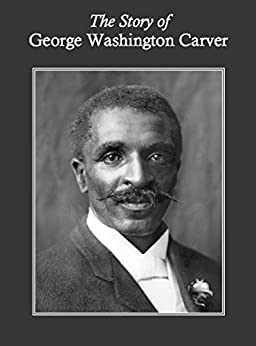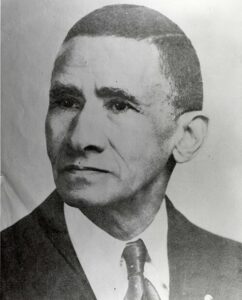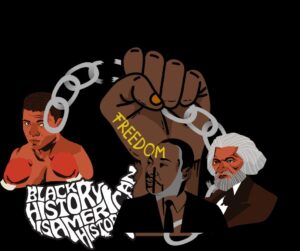Once upon a time in Black Entrepreneur History was an African American man named Dr. George Washington Carver who was born into slavery in Diamond, Missouri on July 12, 1864, but rose to be a world renowned educator, scientist, humanitarian, inventor and idealist.
George Washington Carver had no recollection of his mother or father, but even without his biological parents and childhood trauma, he went on to live and create a fascinating life doing what he loved in agriculture.
When he was a baby, there was a kidnapping. He, his mother Mary and sister were snatched from their home on the Carver’s farm, a white family, where they all worked, owned as slaves, though the family only bought them due to needing help with the farm, according to The Story of George Washington Carver biography. They weren’t mistreated. The only one of George’s family not snatched by ruthless slave catchers was his brother James.
The Carvers eventually found all of them further south in Arkansas, but could only get a sickly infant George back. Through such cruel heartbreak, it was then that George’s mother had to have her son be torn from her, taken back to his original home – with the Carvers. That was the end of him ever knowing his biological mother, and his father Giles was already deceased.
There with the Carvers, he was taught to do domestic chores, read and write, and even learned to plant crops and herbs and appreciate nature which he loved, becoming known as the plant doctor because plants thrived at his touch. He wasn’t a very strong child due to illness growing up, whooping cough, nearly killed him as a baby, therefore, hard labor wasn’t in the cards for him. Plants were right up his alley.
As a true believer in God and His Creation through Christianity, he believed that God was working through him when it came to agriculture and science. Science didn’t make him turn away from God, but pushed him toward God.
When he was old enough to leave that home, he did, and he was fairly young when he left- not even a teenager because he wanted to attend school and needed to find an African American one to attend. Slavery was over right after he was born, so he was free to go and come as he pleased, but he survived his journey by his smarts and wit along with knowledge he’d gained. The only other thing he took from the farm owners was a last name he’d given himself – Carver.
From there, he would quickly begin building a solid future to which his mother would have been proud.
Soon, he ended up in Kansas, again knowing full well how to survive at such a young age by paying close attention to every adult that ever taught him about cooking and cleaning so he could pay for his schooling.
He enrolled in Simpson College to study art in 1890, but because he was black, they rejected his registration at first, but later admitted him. He utilized his skill at art and selling his paintings to be self sufficient and pay schooling fees.
He eventually ended up enrolling into Iowa State Agricultural School in 1891 due to his love for plants. He would study botany, and his goal was to empower African American farmers in practical ways. He succeeded.
As a skilled artist and botanist, he was able to utilize both in teaching methods and record keeping. Very gifted with his hands and mind, he also utilized his knowledge of knitting and sewing, learned from foster mothers as he grew up, to dye fabrics from natural food sources like walnut clay. He developed a variety of house paint as well to help poor farmers improve the appearance of their homes.
Maybe he didn’t know it at the time, but he was the first African American to earn a Bachelor’s degree in Science with focus on Agriculture. He was superb at examining plant diseases as well as diagnosing and treating all types of plant fungi. He had become the most impressive at the University, and he went on to gain his Masters of Agriculture in 1896.
Tuskegee Institute wanted him, and they got him, thanks to Booker T. Washington, the leader of the Institute. He began to teach at an agricultural school that was developed just for him to head. It was here at Tuskegee that his inventions and revelations started.
He developed the idea of crop rotation to heal the soil from so much cotton production. The idea was to plant good food into the soil that would supply it with nitrogen after planting cotton. Foods like sweet potato and soybean would heal the soil to make it reusable and well nourished to produce better crop.
He also went on to launch an industrial research laboratory, inventing new ways to utilize the crops that would benefit agriculture in a whole new way. Carver gained the attention of even the president Roosevelt while also gaining membership into the Royal Society of Arts.
He also invented and designed the moveable school that taught agriculture that his students built, and named it the Jessup Wagon, named Jessup (Jesup) because he got the funding from a NY financier named Morris K. Jesup (Jessup). At first, the movable school was horse drawn but later became mechanized. Dr. Carver used this to go on tour, to county fairs and communities.
Dr. Carver wasn’t the only man in the Jessup wagon, but he also had others who believed in what he had invented – a nurse, architect, home demonstration agent and an agricultural agent, to teach the latest techniques. Self Improvement and reliance was what it was all about.
Over his career, he’d developed approximately 150 to 300 products that could be produced with peanuts and sweet potatoes and more, and even put up a fortune, equating to 1 million dollars today, to create the Carver Museum and the George Washington Carver Foundation at Tuskegee.
He’d done all this by 1936, and by January 5, 1943, he had passed away after having a terrible fall down a flight of steps which led to other complications with his health. Dr. Carver died a strong Christian man who also believed in Science and was buried at Tuskegee University Campus in Tuskegee, Alabama.
At Tuskegee University during his memorial service he was called “a frontiersman in the fight for freedom from want.” by Dean E. C. Mitchell who was the Vice President of Morris Brown College of Atlanta, saying also that he “created abundance out of scarcity.” He also called him a “child of destiny” because he “strengthened underprivileged people around the world.”
Since his death, he has had parks, schools, gardens and even military missiles named after him all across the United States of America, and his work gained international acclaim.
Some written works by George Washington Carver are below, many available as public domain works and some in classic reprint.
- How to Grow the Tomato and 115 Ways to Prepare it for the Table
- Nature Study and Gardening for Rural Schools
- How the Farmer Can Save His Sweet Potatoes: And Ways of Preparing Them for the Table
- How to Build Up Worn Out Soils
- The Story of George Washington Carver (biography)
- How to make Cotton Growing Pay
- Cotton Growing on Sandy Upland Soils
- Help for the hard times Important to farmers 1910
- How to make Sweet Potato Flour, Starch, Sugar, Bread and Mock Cocoanut
- When, what, and how to can and preserve fruits and vegetables in the home
- Pickling and curing of meat in hot weather
- How to grow the cow pea and 40 ways of preparing it as a table delicacy
- 43 ways to save the wild plum crop
Sources: Alabama, Surname Files Expanded, 1702–1981 for George Washington Carver (Ancestry) and The Story of George Washington Carver (biography)





More Related Stories
Isaac Scott Hathaway – Founder of Isaac Hathaway Art Company & Designer of First African American Coin
James Wormley – Founder of the Most Expensive Hotel in Washington D.C. in 1800s – the Wormley Hotel
William E. Matthews – Wealthy Financial Broker & Civil Rights Leader of 1800s